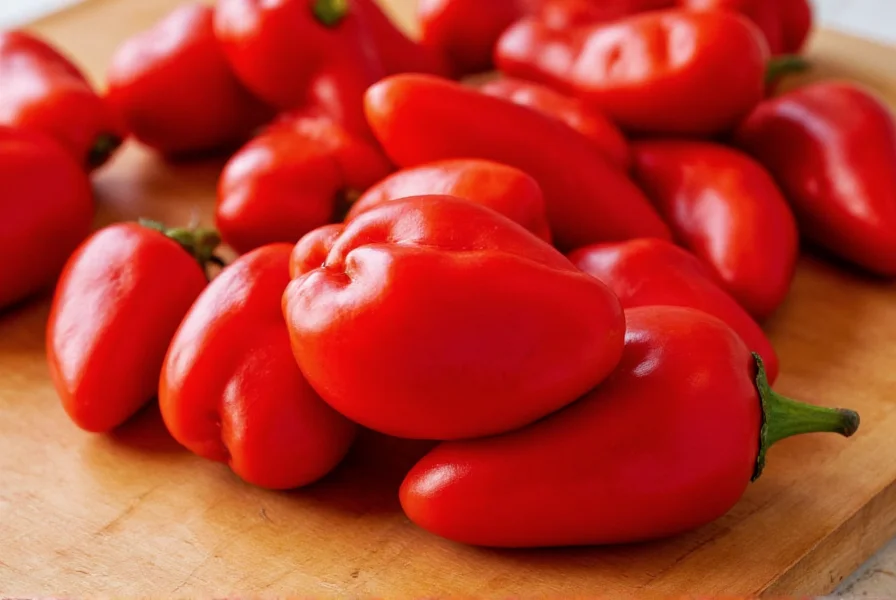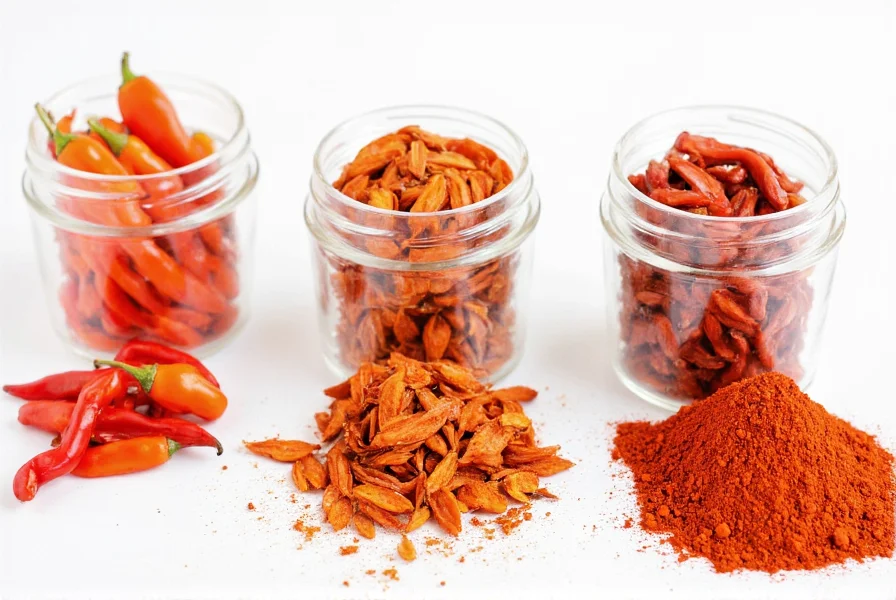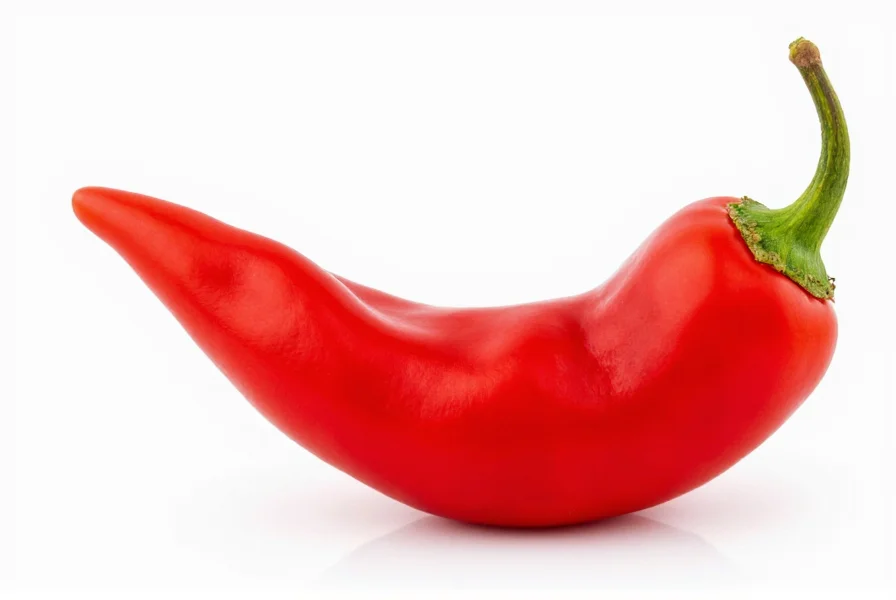Pimiento peppers (Capsicum annuum) are large, heart-shaped sweet peppers with a vibrant red color, exceptionally mild heat (0-500 SHU), and sweet, slightly tangy flavor. Unlike bell peppers, they're specifically cultivated for canning and stuffing, most famously found in green olives and pimento cheese. These peppers contain three times more vitamin C than oranges and are distinct from paprika, which is made from dried pimiento peppers.
When you encounter the term pimiento pepper, you're looking at one of the sweetest members of the Capsicum family. These glossy red peppers measure just 100-500 on the Scoville Heat Scale, making them significantly milder than even the sweetest bell peppers (which range 100-1,000 SHU). Their unique conical shape, typically 3-4 inches long with a distinctive heart-like appearance, sets them apart visually from the blockier bell pepper varieties.
Originating in South America but perfected in cultivation through Spanish and Portuguese agricultural practices, pimientos (also spelled pimentos) have become culinary staples worldwide. The name derives from the Spanish word "pimienta," meaning pepper, reflecting their historical importance in Iberian cuisine. Unlike many peppers that develop heat as a defense mechanism, pimientos evolved to be exceptionally sweet, containing minimal capsaicin.
| Characteristic | Pimiento Pepper | Bell Pepper | Paprika |
|---|---|---|---|
| Shape | Heart-shaped, tapered | Blocky, square | N/A (powder) |
| Heat Level | 0-500 SHU | 100-1,000 SHU | Varies by type |
| Primary Use | Canning, stuffing | Fresh consumption | Seasoning |
| Flavor Profile | Sweet, tangy, fruity | Mildly sweet, vegetal | Earthy, sweet to smoky |
The confusion between pimiento peppers and bell peppers stems from their botanical relationship—they're both cultivars of Capsicum annuum. However, pimientos undergo specific selective breeding for canning purposes. Their thinner walls and higher sugar content make them ideal for preservation, while bell peppers maintain thicker flesh better suited for fresh applications. When you see those red strips in green olives, you're looking at canned pimientos, not bell peppers as many assume.
Culinary applications for fresh pimiento peppers extend far beyond olive stuffing. Chefs value them for:
- Creating authentic Spanish pimientos de Padrón (though distinct from the famous spicy Padrón variety)
- Making traditional Portuguese pimentão spreads
- Preparing Southern-style pimento cheese with sharp cheddar
- Adding color and sweetness to Mediterranean tapenades
- Stuffing with seafood or cheese fillings
Nutritionally, pimiento peppers shine as vitamin powerhouses. A single medium pimiento provides 150% of your daily vitamin C requirement—triple that of an orange by weight. They're also rich in vitamin A (as beta-carotene), potassium, and antioxidants like lutein that support eye health. Unlike hotter peppers that derive benefits from capsaicin, pimientos deliver health advantages through their high carotenoid content.

Selecting quality pimiento peppers requires attention to specific characteristics. Look for firm, glossy skins without wrinkles or soft spots. The best specimens feel heavy for their size, indicating high water content. Unlike bell peppers that come in multiple colors, authentic pimientos are exclusively deep red when fully mature—never green, yellow, or orange. If purchasing canned pimientos (the most common form), check for BPA-free linings and avoid products with added preservatives.
Storage differs significantly between fresh and canned varieties. Fresh pimientos maintain quality for 7-10 days when stored in the crisper drawer of your refrigerator. For longer preservation, roast and freeze them in airtight containers—they'll retain flavor for up to 6 months. Canned pimientos should be transferred to glass containers after opening and consumed within 5 days. Never store fresh pimientos at room temperature, as they deteriorate rapidly.
The relationship between pimiento peppers and paprika often causes confusion. Paprika is a spice made by grinding dried pimiento peppers. Hungarian paprika specifically comes from special pimiento cultivars grown in Hungary's Szeged region, while Spanish paprika (pimentón) often includes smoked varieties. The vibrant red color in dishes like paella or deviled eggs comes from paprika, not fresh peppers. Understanding this distinction helps when following authentic recipes that specify one form over the other.

For gardeners interested in cultivation, pimiento peppers require 70-80 days to reach maturity. They thrive in warm climates with consistent moisture and well-drained soil. Unlike bell peppers that tolerate cooler temperatures, pimientos need sustained heat to develop their characteristic sweetness. The plants typically grow 18-24 inches tall with white flowers preceding the fruit. Harvest when peppers achieve deep red coloration—picking them earlier yields less sweetness and more vegetal flavor.
When substituting pimiento peppers in recipes, consider both texture and flavor implications. For fresh applications, red bell peppers make the closest substitute, though they lack the distinctive heart shape. In cooked dishes, roasted red peppers can work but often have stronger flavor. For the classic olive stuffing appearance, nothing replicates the specific shape and color of authentic pimientos. Understanding these substitution nuances ensures recipe success whether you're making pimento cheese, stuffed olives, or Spanish romesco sauce.











 浙公网安备
33010002000092号
浙公网安备
33010002000092号 浙B2-20120091-4
浙B2-20120091-4